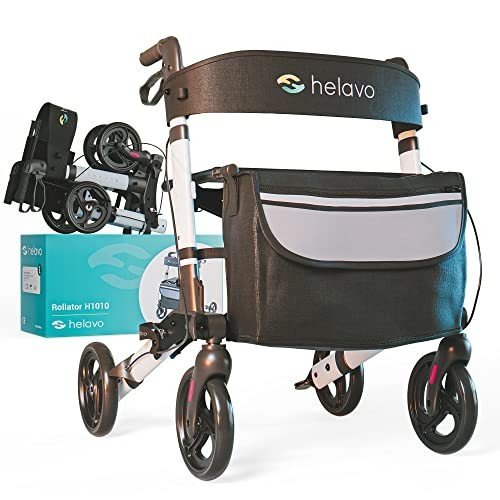This company has no active jobs
0 Review
Rate This Company ( No reviews yet )
About Us
Five Killer Quora Answers To Indoor Walker
The Rise of Indoor Walkers: A Comprehensive Guide
Indoor walkers have become a popular service for people seeking to maintain an active lifestyle within the confines of their homes. These flexible devices accommodate a diverse audience, from fitness enthusiasts to those recuperating from injuries. This article will delve into the basics of indoor walkers, their benefits, types, and some factors to consider to remember before buying one.
What is an Indoor Walker?
An indoor walker is a physical fitness machine developed to replicate walking without the need for outdoor space. Unlike conventional treadmills, which primarily focus on running and running, indoor walkers stress a natural walking motion. They are geared up with features that promote stability, support, and convenience, making them appropriate for a large range of users.
Why Choose an Indoor Walker?
Indoor walkers featured a myriad of benefits that appeal to users of any ages and physical fitness levels. A few of the primary advantages consist of:

- Convenience: They can be utilized anytime, regardless of weather or time, making it much easier to fit exercise into a hectic schedule.
- Low Impact: Indoor walkers are designed to lower strain on joints, making them an exceptional option for those with mobility concerns or joint concerns.
- Space-Efficient: Many models are compact and simple to shop, fitting into small apartment or condos or homes with limited area.
- Variety of Workouts: With adjustable speeds and intensity levels, users can tailor their exercises to their fitness objectives.
Types of Indoor Walkers
Indoor walkers been available in different designs, each accommodating different user requirements. Here are some of the most common types:
| Type | Description | Ideal For |
|---|---|---|
| Manual Walkers | Operated by the user, moving the arms and legs in a walking movement. | Novices seeking a basic, cost-efficient option. |
| Motorized Walkers | Equipped with a motor to manage speed and incline settings. | Those wanting a more versatile workout experience. |
| Under-desk Walkers | Compact makers that fit under desks, promoting walking while working. | People working from home wanting to stay active. |
| Recumbent Walkers | Allow users to walk in a seated position, decreasing tension on the body. | Older grownups or those with mobility challenges. |
Secret Features to Consider
When selecting the ideal indoor walker, a number of functions can impact the general workout experience. Here are some necessary considerations:

- Size and Portability: Ensure it fits your designated exercise area and is quickly movable if required.
- Weight Capacity: Check the optimum weight limit to guarantee safety during exercises.
- Adjustable Settings: Look for machines that use adjustable speed and slope settings to customize your exercises.
- User-Friendly Display: Choose an indoor walker with an easy-to-read display screen that tracks time, range, calories burned, and speed.
- Convenience Features: Consider cushioned manages, adjustable height, and a sturdy base for improved stability and comfort.
Health Benefits of Indoor Walking
Taking part in routine indoor walking can yield numerous health benefits:
- Enhanced Cardiovascular Health: Walking boosts heart rate and improves blood circulation, decreasing the risk of heart problem.
- Weight Management: Regular walking, combined with a balanced diet, aids in weight control and can contribute to weight loss.
- Enhanced Mood: Physical activity releases endorphins, which can assist reduce feelings of anxiety and depression.
- Reinforced Muscles: Indoor walking strengthens the leg muscles and enhances overall body coordination and balance.
Setting Up a Walking Routine
To maximize the benefits of indoor walking, it’s essential to establish a constant regimen. Here are some suggestions to begin:
- Create a Schedule: Dedicate particular times throughout the week for walking. Go for a minimum of 150 minutes of moderate aerobic activity weekly.
- Warm Up and Cool Down: Always start with a 5-minute warm-up to prepare your body and surface with a cool-down to assist recovery.
- Listen to Your Body: Pay attention to how you’re feeling. If you experience discomfort or pain, stop and evaluate your body’s needs.
Often Asked Questions (FAQs)
Q: How much space do I need for an indoor walker?A: Most indoor walkers are compact and require a small footprint. It’s advisable to have at least 6 to 8 square feet readily available for a safe workout location. Q: Can indoor walkers be utilized by olderadults?A: Yes, indoor walkers are outstanding for older adults as they provide low-impact workout while promoting stability and mobility. Q: Do I need a health club membership if I have an indoor walker?A: No, having an indoor walker permits you to participate in cardio workouts in the house, negating the need for a health club subscription for walking exercises. Q: How do I maintain my indoor walker?A: Regularly look for loose screws, tidy the machine after use, and follow the manufacturer’s standards for particular upkeep schedules. Q: Are indoor walkers suitable for rehabilitation?A: Yes, numerous indoor walkers are developed to support rehabilitation, especially for clients recuperating from surgery or injury. Constantly seek advice from with a health care professional before starting a new exercise routine. Indoor walkers provide a practical and reliable way to integrate physical activity into everyday life. With their multiple health benefits, easy to use designs, and adaptability, they are an excellent investment for anybody looking to improve their
fitness levels in the convenience of their home. By comprehending the different kinds of indoor walkers, essential functions to think about, and the health benefits of walking, individuals can make informed options that line up with their physical fitness objectives. With commitment and the ideal devices, remaining active has never been much easier.


